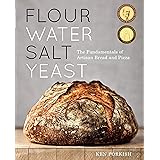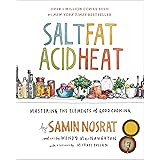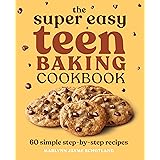Maximizing your protein intake is one of the most effective strategies for supporting muscle growth, enhancing satiety, and generally improving overall health. The video above highlights some of the most protein-rich foods you can easily find at your local grocery store, providing practical guidance for hitting your daily protein goals.
Contrary to older nutritional wisdom, recent studies suggest our bodies can effectively digest and utilize up to 100 grams of protein in a single serving, particularly post-workout. This insight fundamentally shifts how we approach daily protein targets, making it more feasible to achieve significant intake through whole foods. Let’s delve deeper into these powerhouse options, expanding on their benefits and how to integrate them into your diet.
High-Protein Meats: Building Blocks for Your Body
When it comes to foundational protein sources, meats like chicken and beef stand out due to their complete amino acid profiles and high protein density. Understanding the nuances between cuts can help you optimize your protein-to-fat ratio and manage your budget effectively.
Chicken: Lean Protein Power
Chicken remains a go-to for many looking to boost their protein. The choice between chicken breast and chicken thighs often comes down to personal preference for flavor versus pure protein density.
A 3-ounce portion of lean chicken breast offers an impressive 26 grams of protein. This cut is remarkably low in fat, making it an ideal choice for those focused on maximizing protein with minimal additional calories.
In contrast, chicken thighs, while flavorful due to their higher fat content, provide around 21 grams of protein per 3-ounce serving. The fat, which contributes to its rich taste and moisture, essentially takes up some of the space that protein would otherwise occupy. Both are excellent choices, but for the absolute highest protein per calorie, chicken breast reigns supreme. Imagine it like a concentrated protein shot versus a more balanced, flavorful meal experience.
Consider that a typical serving size can easily be doubled or tripled, meaning a 6-9 ounce portion of chicken breast could deliver 40-60 grams of protein. This makes either cut a versatile and potent source for reaching substantial protein targets in a single meal.
Beef: Versatility and Value in Protein
Beef offers a wide array of protein-rich options, from budget-friendly cuts perfect for slow cooking to premium steaks. Its rich flavor and nutrient density make it a staple in many high-protein diets.
The top round or bottom round cuts are often an economical and incredibly protein-dense choice. A 4-ounce serving of these leaner cuts typically provides around 27 grams of protein. While tougher, making them ideal for pressure cookers or slow cookers, they deliver more protein than even ground beef or a filet mignon.
Think of these cuts as a slow-release protein treasure. They require patience in preparation but reward you with exceptional nutritional value and cost savings. Utilizing a slow cooker can transform these cuts into tender, flavorful dishes like pot roasts or shredded beef for tacos.
For quicker preparation, lean ground beef, particularly 93/7 (93% beef, 7% fat), is an excellent choice. A 4-ounce serving still packs a significant 24 grams of protein. This slight reduction compared to the round cuts is due to the higher fat content, which, as with chicken thighs, adds flavor but displaces some protein volume. It’s the equivalent of choosing a slightly wider highway; you might not get there as quickly on pure protein, but the journey is more enjoyable for some.
If you prefer a more luxurious option, a 4-ounce filet mignon also provides 24 grams of protein. Filet mignon is known for its leanness compared to fattier steaks like ribeye or strip, reinforcing the principle that less fat generally means more protein per serving. Whether it’s a lean, budget-friendly round steak or a premium filet, beef offers robust protein solutions for any preference or wallet.
Dairy Delights: Creamy Protein Powerhouses
Dairy products have long been celebrated for their calcium content, but many are also exceptional sources of protein. Cottage cheese and Greek yogurt have seen a resurgence in popularity, and for good reason.
Cottage Cheese: A Timeless Protein Source
Cottage cheese, a favorite of generations, has recently garnered renewed attention on social media, cementing its place as a modern high-protein staple. Its impressive protein density makes it an easy win for protein goals.
A mere half-cup serving of cottage cheese delivers a substantial 14 grams of protein. When combined with its moderate fat content, particularly in organic whole milk varieties, it also contributes significantly to satiety. This combination of protein and healthy fats helps you feel full longer, reducing the likelihood of overeating later in the day.
Consider cottage cheese as a nutritional workhorse, providing both the muscle-building benefits of protein and the sustained energy of fats. It’s incredibly versatile, enjoyed plain, mixed with fruit, or even blended into creamy sauces for a protein boost.
An important note on dairy: cow’s milk protein is 100% bioavailable. This means your body can fully absorb and utilize all the protein listed on the label. This contrasts with many plant-based protein sources, where bioavailability can be lower, meaning your body might only absorb a fraction of the stated protein content.
Greek Yogurt: Strained for Superiority
When selecting yogurt for protein, Greek-style is unequivocally the superior choice. The key difference lies in its preparation process: Greek yogurt is strained, a method that fundamentally alters its nutritional profile.
This straining process removes much of the whey, which is the watery part of the milk. The result is a thicker, creamier yogurt with a significantly higher protein concentration and lower natural sugar content compared to regular, unstrained yogurt.
For instance, a 3/4-cup serving of regular yogurt might only offer 6 grams of protein and 8 grams of natural sugar. In stark contrast, the same 3/4-cup of strained Greek-style yogurt can boast an impressive 16 grams of protein while containing only 4 grams of natural sugar. This dual benefit of more protein and less sugar makes Greek yogurt an outstanding choice for any health-conscious individual.
The protein boost in Greek yogurt is like condensing a large stream into a powerful waterfall; the force, or in this case, the protein, becomes far more concentrated. Opt for whole milk Greek yogurt to also benefit from healthy fats, further enhancing satiety and the absorption of fat-soluble vitamins.
Smart Snacking for On-the-Go Protein
Maintaining high protein intake doesn’t have to be confined to main meals. Portable, protein-rich snacks are invaluable for bridging gaps between meals, especially when you’re busy or traveling. However, not all on-the-go protein options are created equal.
Beef Sticks and Bars: Convenient Protein Power
Beef sticks and bars are fantastic for a quick protein hit. They offer convenience and a satisfying texture, but it’s crucial to examine their ingredient labels, especially for flavored varieties. Many teriyaki or sweet chili beef sticks, for example, can contain added cane sugar, which detracts from their health benefits.
Brands like PaleoValley and Chomps offer high-quality, sugar-free options. The Epic beef and venison bars are particularly notable. While an Epic beef bar might provide 8 grams of protein, their venison bar offers a remarkable 12 grams of protein. This 50% increase is due to venison being an inherently leaner meat than beef.
The leaner nature of venison, while sometimes making it challenging to cook in its whole form, translates perfectly into a protein bar. It’s like comparing a compact sports car to a sedan; both get you there, but one delivers more punch in a smaller package. These bars are excellent for staving off hunger and maintaining energy levels throughout the day.
Seafood for Protein: Navigating the Ocean’s Bounty
The ocean provides an abundance of protein-rich options, with fresh tuna often hailed as the king. However, for everyday consumption, understanding mercury levels and choosing the right canned varieties is paramount.
Canned Tuna: Economical and Accessible Protein
Fresh tuna, particularly larger species like yellowfin or ahi, is indeed protein-dense. However, its larger size also means a higher accumulation of mercury, which can be a concern with frequent consumption. This is where canned tuna steps in as a smart, economical, and lower-mercury alternative.
By opting for smaller tuna species like skipjack or chunk light, you significantly reduce your mercury exposure. These smaller fish have shorter lifespans and feed lower on the food chain, resulting in less time to accumulate mercury.
While larger tuna (albacore or yellowfin) might offer slightly more protein per serving (22-26 grams per 3 ounces), the smaller skipjack or chunk light varieties still pack an impressive 20 grams of protein per 3 ounces. A single 5-ounce tin of skipjack, for example, provides around 30 grams of protein, making it an incredibly potent and budget-friendly protein source. It’s a trade-off where a slight reduction in protein yields a significant gain in safety for regular consumption.
Think of it as choosing a reliable, everyday commuter car over a high-performance race car; both serve their purpose, but one is more practical and safer for daily use. Canned skipjack or chunk light tuna can be transformed into delicious tuna salads, casseroles, or added to pasta dishes.
Egg-cellent Protein: The Whole Package
Eggs are a universally accessible and incredibly versatile source of protein, healthy fats, and essential micronutrients. They offer a complete nutritional package that few other foods can match.
Each large egg provides approximately 6 grams of protein and 5 grams of healthy fats. The synergistic combination of protein and fat is particularly effective at promoting satiety, keeping you full and energized for extended periods. This makes eggs an ideal breakfast choice or a satisfying addition to any meal.
While egg whites contain a significant portion (over 60%) of an egg’s protein, opting for whole eggs is crucial for maximizing nutritional benefits. The yolk, often discarded for fear of fat, is a treasure trove of vitamins (like D, E, K), minerals, and beneficial amino acids. Stripping away the yolk means missing out on these vital nutrients and the fat that enhances satiety. It’s like buying a high-performance bicycle but only using one wheel; you miss out on the full design and benefits.
For many, two eggs might not even be enough to kickstart the day. Three hard-boiled eggs, perhaps drizzled with a little olive oil and seasoned with salt and pepper, can provide a robust and satisfying protein boost, setting a strong foundation for your metabolism and energy levels.











